Extreme Photophobia: 5 Examples + Key Takeaways
You would be hard pressed to hear a person with photophobia or light sensitivity describe their symptoms as anything other than “extreme.” Photophobia is often debilitating, affecting everything from an individual's eyes to their emotions. Still, light sensitivity may fall on a subtle spectrum of severity, particularly in how it negatively impacts a person’s life. In this post, we take a look at five examples of patients whose extreme photophobia has been described in medical literature, and what we can learn from their experiences.
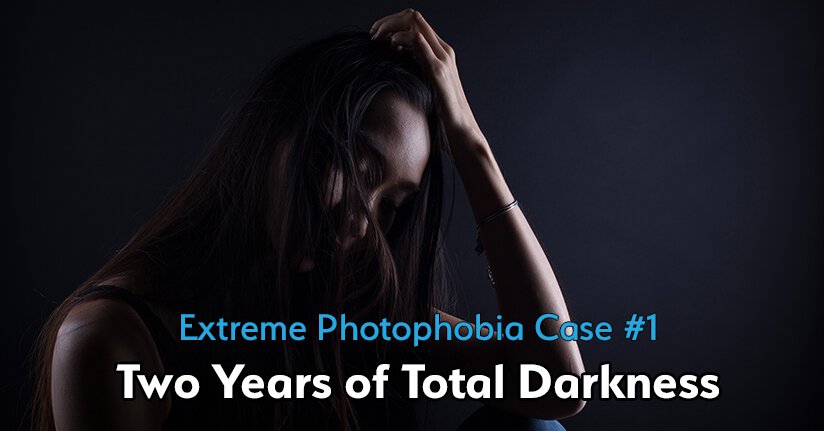
Two Years of Total Darkness
If there is one thing we know about living with photophobia, darkness is often the only source of comfort for many. However, you can become too reliant on the dark, which can significantly worsen your symptoms over time. A 57-year-old patient who had been living with chronic migraine attacks for years decided to completely avoid all light as a result of her extreme photophobia.
"The photophobia led her to live in complete darkness; her home was totally blacked out, and only a small camping light set to nocturnal settings was used for illumination in the bathroom. She wore a mask over her eyes when she ventured outside." (source: Sue Hughes, Medscape)
Unfortunately, this created several problematic outcomes, particularly in the functioning of her brain. Blood flow was restricted to the areas where vision is processed, and the patient’s eyes would move violently back and forth. Incredibly, this process began to reverse itself upon successful treatment of her migraine attacks and as she introduced more and more light back into her world. In fact, it had completely cleared after 8 months, showing just how resilient the brain can be.
Key takeaways:
- Migraine remains a leading cause of photophobia. More than 80% of people with migraine (regardless of type) experience sensitivity to light, which means millions of people have to deal with the symptom as part of their condition.
- This is a cautionary tale of the dangers of dark adaptation. Hiding in a dark room or wearing sunglasses indoors may be okay for very short periods when you’re photophobic, but complete dissociation from all light can have major consequences.
- The brain has an incredible ability to bounce back. Spending years in total darkness does not appear to permanently alter your brain makeup or long-term outcomes. In fact, the brain may be able to fully recover with increasing light exposure and other appropriate remedies.
Source:
Kamourieh S, Sokolska M, Akram H, et al. Miners' nystagmus following visual deprivation: A case report. Annals of Internal Medicine. 2021;174(7):1021-1022. doi:10.7326/l20-1261.
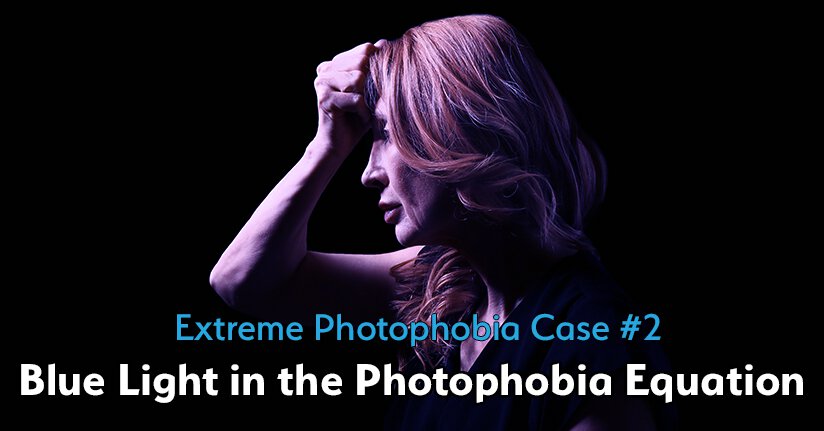
Blue Light in the Photophobia Equation
Over the years, blue light exposure has been given increasing scrutiny as we seek to understand its impact on our eye and brain health. Specific wavelengths (near 480nm) can be especially triggering for people with migraine and other neurological deficits as they are believed to affect non-vision forming pathways in the brain—via photosensitive cells called iPRGCs in the eye. This is why light can produce photophobic discomfort as well as initiate the development of other acute symptoms too.
A 39-year-old woman with no history of migraine (but other comorbid conditions, including fibromyalgia) described her experiences with chronic photophobia, which was specifically exacerbated by blue light:
"She reported that exposure to blue light produced constant eye pain and that her vision would become blurry, as if there were ‘like talcum powder sprinkled in the air.’ She also reported contraction of muscles in her face, nausea, increased heart rate, strong negative affect, and a ‘strong sense of fear and isolation.’"
As a result, she underwent imaging to investigate how her brain reacted to this kind of light, and researchers found elevated activity in the bilateral pulvinar nuclei, which is directly linked to the iPRGCs associated with photophobia and blue light sensitivity. These findings further validate why she self-reported immediate relief with TheraSpecs therapeutic glasses, which includes their FL-Pro lenses that target the wavelengths at and around 480nm.
Key takeaways:
- Light sensitivity and light exposure can make you feel anxious, fearful. One of the most powerful descriptions here was how light exposure led to feelings of “fear and isolation,” signaling that light sensitivity is not only associated with physical symptoms but emotional ones as well.
- Certain blue wavelengths are worse than others for photophobia. Not all blue light has the same effect, and this case study supports prior research that 480nm blue light negatively activates a brain with photophobia. Other wavelengths nearer to UV can generate eye and/or brain symptoms, but the strongest research shows 480nm light is most harmful for light sensitivity.
- Therapeutic glasses (like TheraSpecs) that target the right light provide relief. Blue light blocking lenses, with optimal filtering at 480nm like TheraSpecs' FL-Pro and FL-Blend glasses, remain one of the most effective remedies for light sensitivity, which can be immediate AND long lasting.
Source:
Panorgiasa A, Lee D, Silva KE, Borsook D, Moulton EA. Blue light activates pulvinar nuclei in longstanding idiopathic photophobia: A case report. Neuroimage: Clinical. https://doi.org/10.1016/j.nicl.2019.102096. Published November 16, 2019.
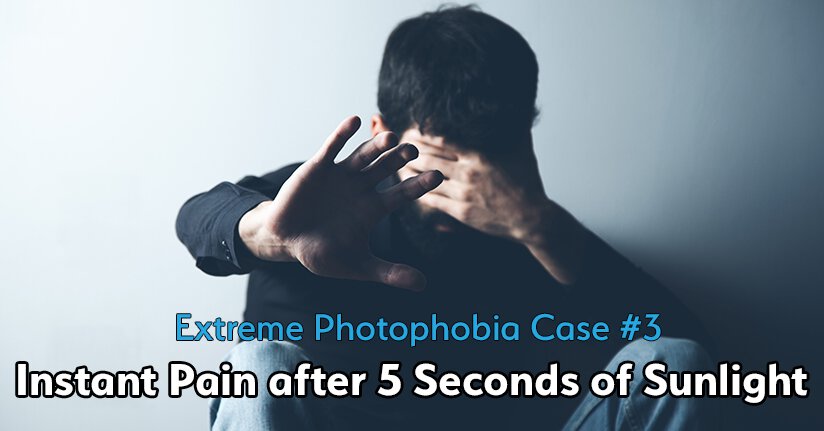
Instant Pain after Five Seconds of Sunlight
After migraine and headache disorders, traumatic brain injuries (TBI) are a frequent cause of photophobia symptoms. Although every person’s experience is different, the short- and long-term impact of light sensitivity is no less pronounced. In this case study, a male patient vividly shared how severe his photophobia had become after the injury:
"I was so hypersensitive to light and sound that I had to wear ear plugs, headphones, sunglasses, [a] giant sun hat, and a scarf just to attend the appointment and upon leaving the house. To help better explain, I could not be outside in the light for even 5 seconds...For a year after the accident I could not drive, I lived in darkness at home, and struggled emotionally."
The man endured severe post-TBI headaches and migraine attacks as well, which can make light more intolerable for people after a brain injury. And similar to others’ stories, he shared how it was even hard to fill out the paperwork in the doctor’s office because of the intensity of the lights. Thankfully, he did get through the administrative tasks and ended up having a great experience with the doctor, who recommended a variety of therapies and treatments for his TBI—which also helped relieve his sensitivity to light. Here’s how he summarized his progress: “Within the following days, it was like an awakening. I could turn on lights for a few minutes and keep the TV on. It seemed like a light switch was turned back on inside my head even though it was dim.”
Key takeaways:
- Light sensitivity is one of the most common symptoms of TBI. While it is likely underreported, more than half of people with mild traumatic brain injuries have photophobia, and it can also accompany more severe TBIs. In addition, it can occur both in the acute phase (within days of the injury) and/or persist for months or years after the TBI.
- Doctors can be incredible sources of hope and optimism. Living with chronic photophobia is devastating for many, which is why we turn to medical professionals to help us navigate the physical and emotional hardships. In this case, the man shared how his sense of hope for the future had returned upon his first encounter with a new doctor—which reminds us of the importance of their role beyond just physical care.
- Treatments for the primary condition can also improve photophobia. Although nothing was specifically prescribed for the man’s light sensitivity, his symptoms improved as a result of other effective therapies that were designed to treat the TBI. Similar outcomes have been reported with migraine-specific treatments also helping to relieve photophobia.
Source:
Hughes JC. Case Report for TBI (Traumatic Brain Injury) Patient Treated with A Protocol of HBOT (Hyperbaric Oxygen Therapy), Autologous Human Plasma, Cranial Therapy, EEG Biofeedback, IV Nutrition, and Adult Stem Cells. TBI Therapy. https://tbitherapy.com/wp-content/uploads/2016/05/Full-Case-Report.pdf. Published May 2016. Accessed August 29, 2021.
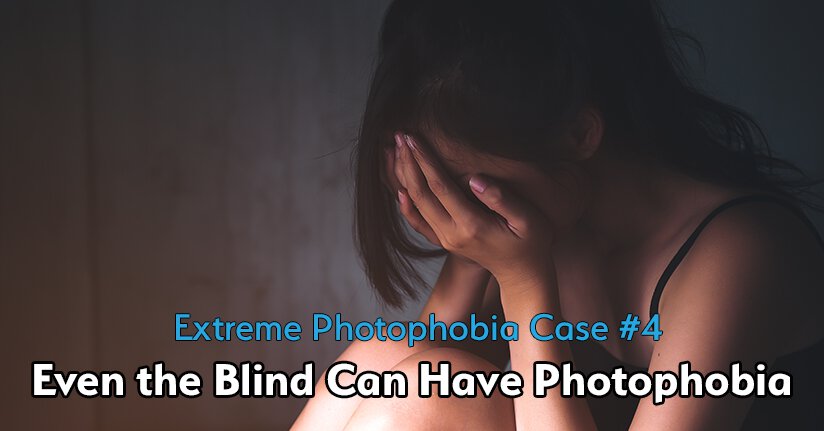
Even the Blind Can Have Intense Photophobia
We already shared how vision is not necessarily central to the onset of light sensitivity, and in fact, evidence shows that blind persons can have photophobia which mirrors visually-healthy patients. A 2006 case study detailed just how painful these symptoms were for a woman without sight, after she had been diagnosed with photophobia and worsening headaches caused by benign brain tumors (pituitary adenoma).
"The patient had no light perception in either eye; however, she reported discomfort in her eyes with exposure to light. The discomfort was so severe that the room lights had to be turned off and the windows covered.
These findings once again reinforced that there are non-visual pathways that can result in photophobia, specifically in the activation of iPRGCs in the eye that connect to pain centers in the brain. Unfortunately the patient passed away (unrelated to her light sensitivity) shortly thereafter, but still provided tremendous insight for the medical community about her and others' symptoms.
Key takeaways:
- Photophobia is neurological in origin. Although the eyes play an important role in light-sensitive reactions, the buck ultimately stops with how the brain receives and processes these signals. This is why blind individuals can experience photophobia-related pain.
- Light can be a trigger for your symptoms. In this particular case, the patient described how light exposure brought on eye discomfort (and a worsening of headache symptoms too), which is as much a part of the photophobia experience as wanting to avoid bright light.
Source:
Amini A, Digre K, Couldwell WT. Photophobia in a BLIND Patient: An alternate visual pathway. jns. https://doi.org/10.3171/jns.2006.105.5.765. Published November 1, 2006. Accessed August 29, 2021.
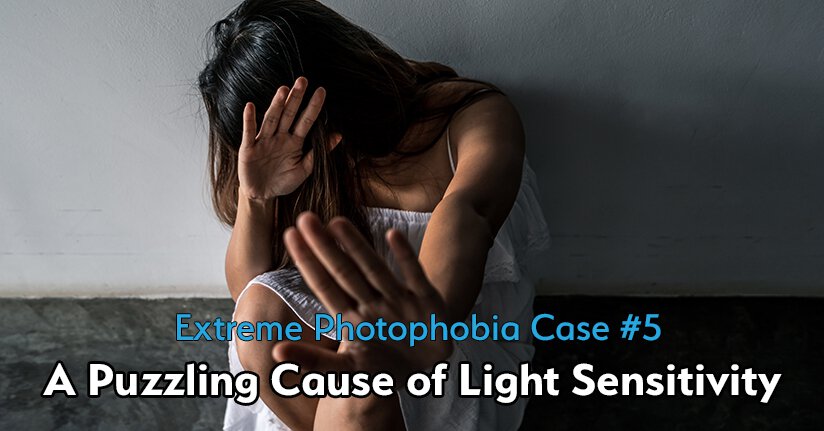
A Puzzling Cause of Severe Light Sensitivity
Herpes zoster, commonly known as shingles, can present with significant complications involving the eye and brain, including photophobia. In this unique example, a woman with these ocular consequences had completed an antiviral treatment for the condition, but later developed acute sensitivity to light in both eyes as well as double vision. She also reported that the sensory symptoms were preceded by pain behind her left eye.
"She was a well-appearing middle-aged woman in significant distress. She arrived with her left eye patched shut. Her eyelids had to be manually retracted to perform the ocular examination due to her severe photophobia."
Now that certainly seems extreme, and yet it is not uncommon for severe light sensitivity to manifest in the inability to open one’s eyes fully. As doctors examined her symptoms, they did not find any ocular inflammation that typically precedes photophobia in shingles—thus leaving questions about whether the condition directly caused her symptoms. They hypothesized that inflammation from the shingles ultimately spread to her central nervous system and surrounding areas, leading to the development of her external sensitivities.
Key takeaways:
- There are numerous signs and symptoms of photophobia. This particular patient described experiencing pain behind the eye before the sensitivity to light began, underscoring that there are countless experiences associated with photophobia that must be considered.
- The causes of photophobia continue to be elusive. There are several eye-brain connections believed to influence light sensitivity, and so no singular cause can explain its onset. Although some of these processes have been defined, doctors and researchers must often explore a variety of explanations.
- Light sensitivity often affects both eyes, but not always. Typically, photophobia is felt in both eyes, causing bilateral pain and related symptoms. Although that is also what happened in this case, there are rare instances of it only impacting one eye.
Source:
Seddon I, Skolnick K. Severe bilateral PHOTOPHOBIA and unilateral abducens NERVE Palsy: An unusual presentation of herpes ZOSTER OPHTHALMICUS. Case Reports in Ophthalmology. https://doi.org/10.1159/000515567. Published June 14, 2021. Accessed August 29, 2021.
Last updated 25th Mar 2024
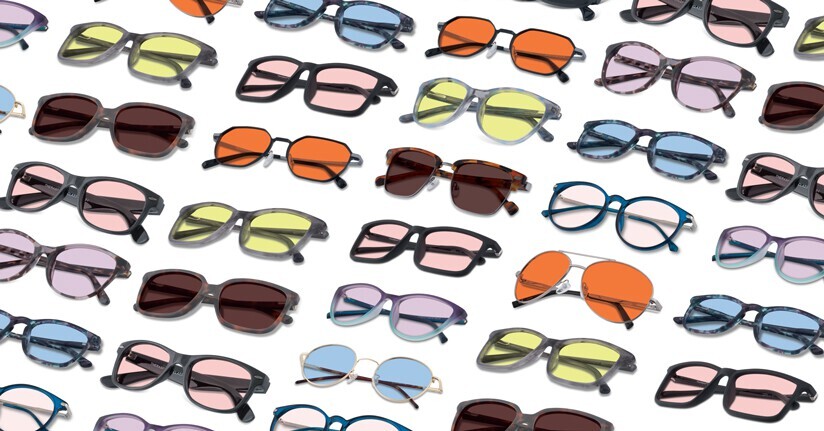
TheraSpecs® Glasses for Light Sensitivity
Find the glasses that fit your needs and lifestyle, and stay protected from screens, fluorescents, unwanted blue light, sunlight, flashing lights, and more.
Shop Now



